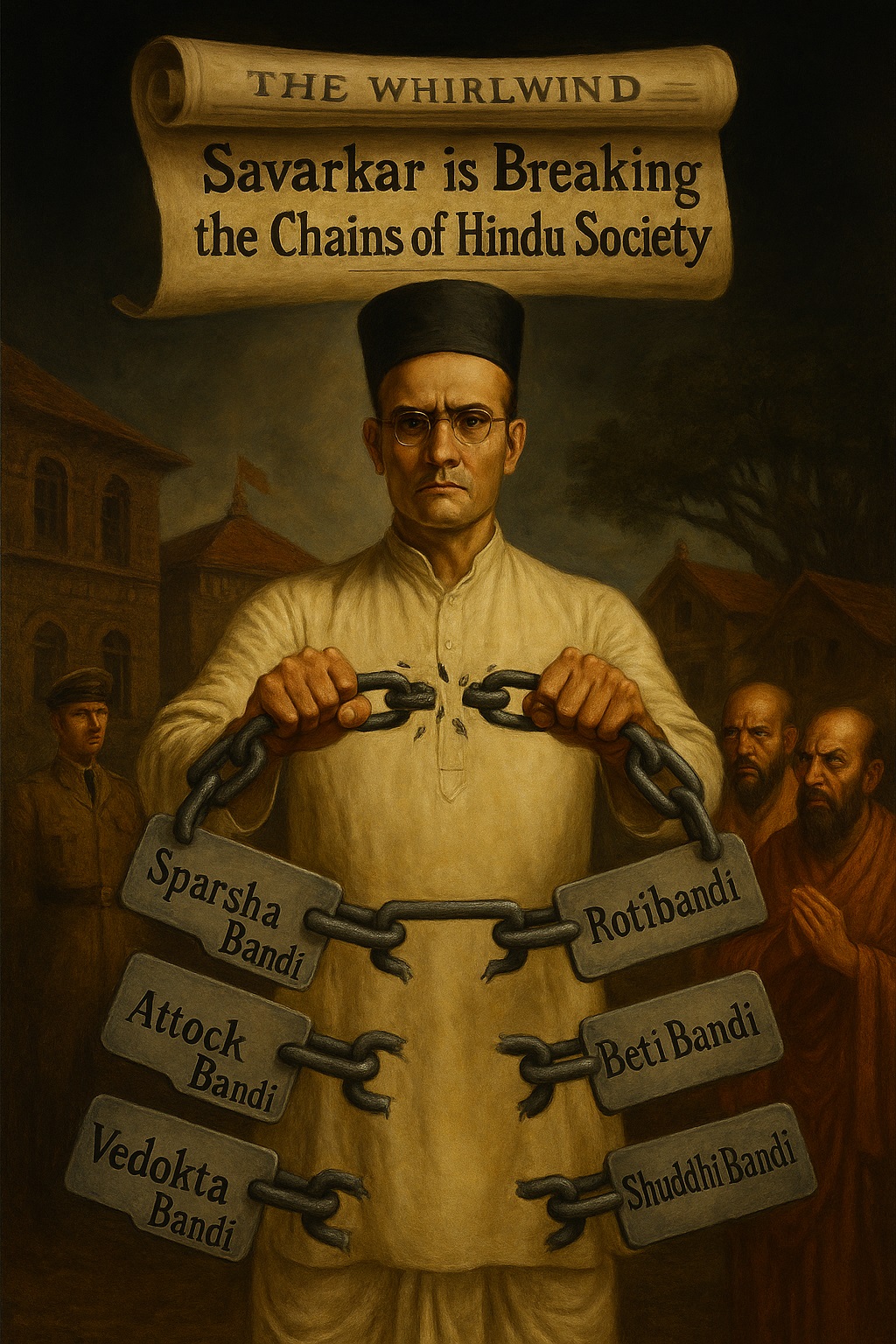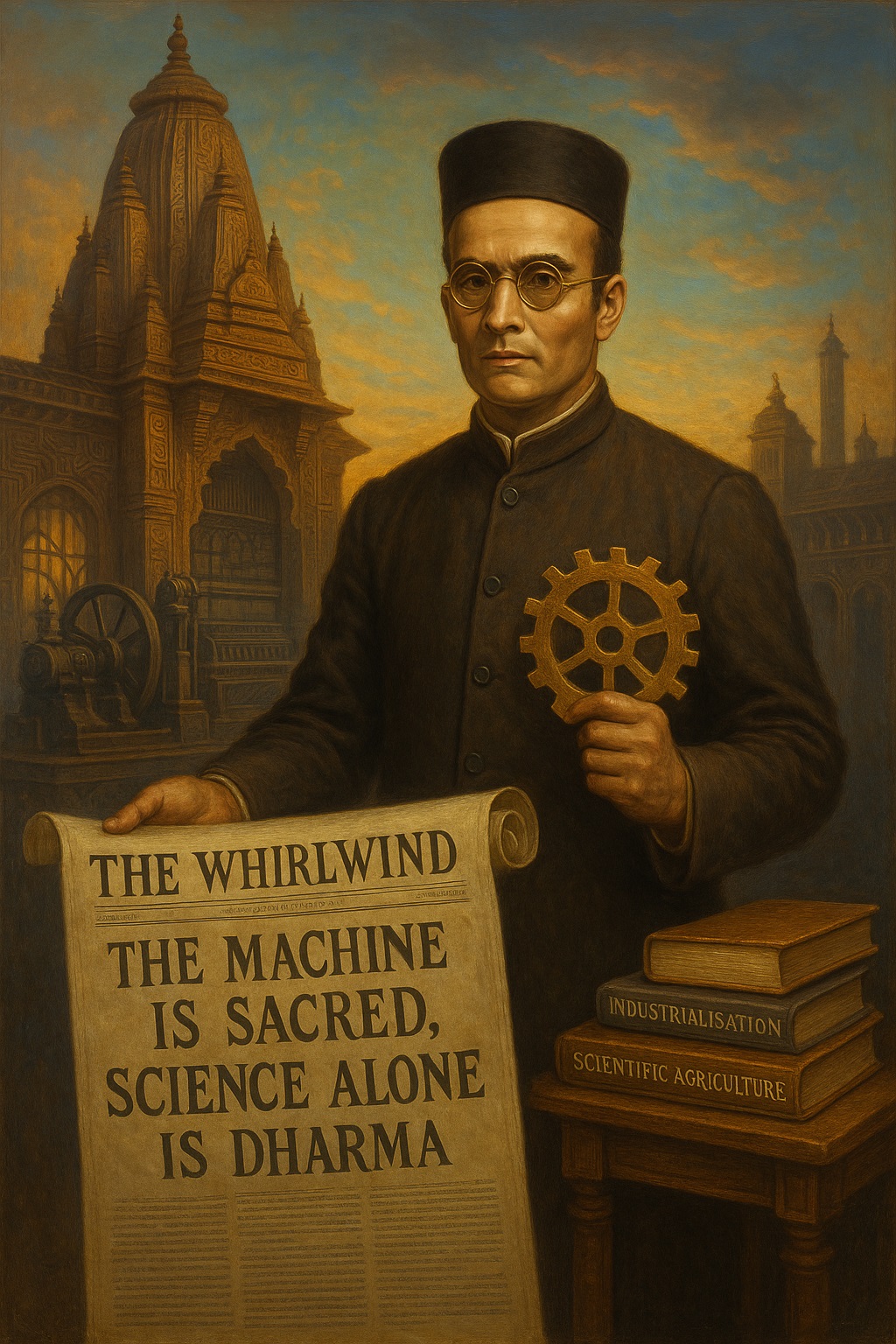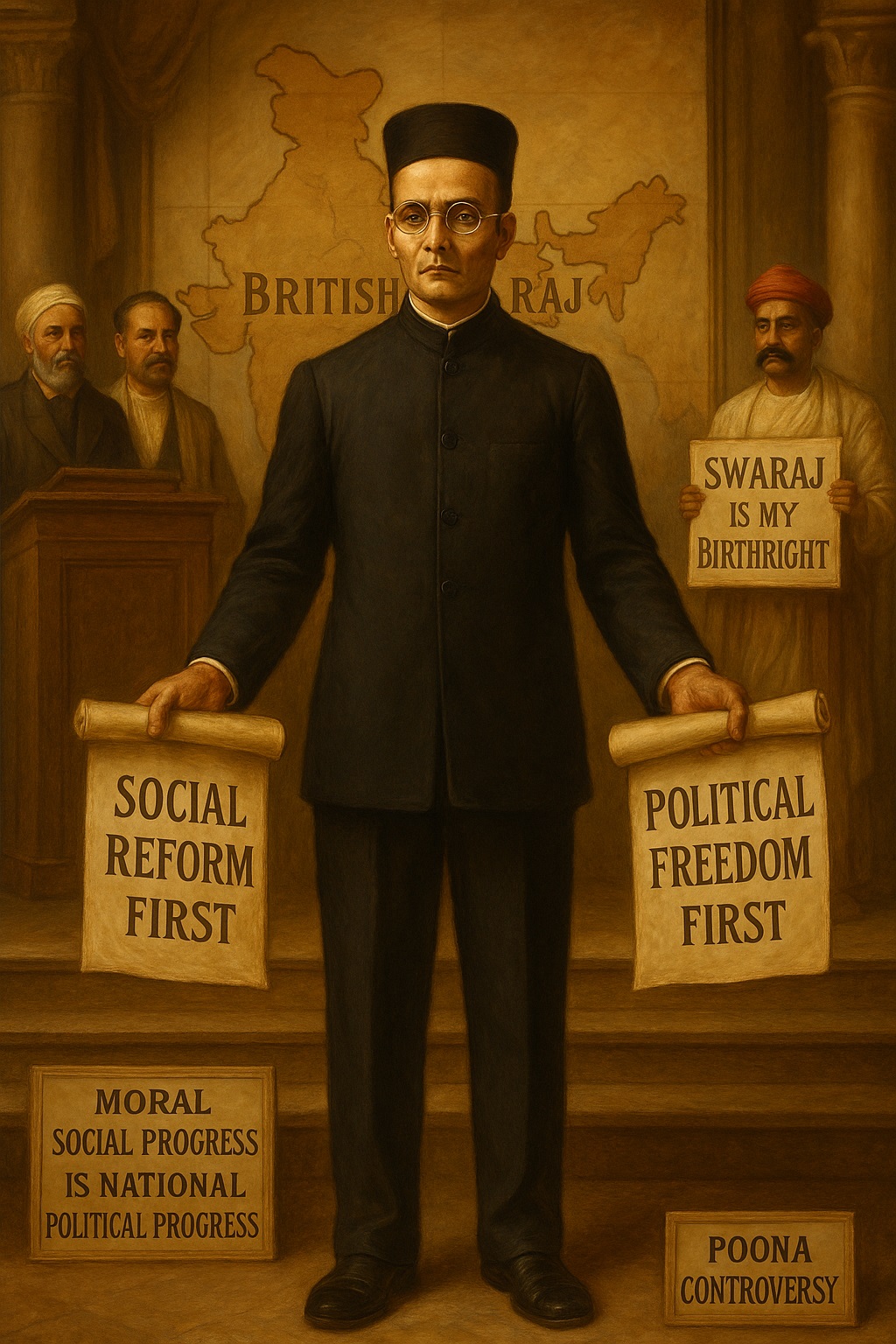Tag: Social Reform
-
Social-Reformist Dimension of Hindutva, Part 7 Veer Savarkar’s time in Ratnagiri, a period of enforced confinement following his years in the Andamans, proved to be a pivotal chapter in his focus on social reform. Released from prison in 1924, he was subjected to stringent restrictions, including a ban on political activity and a mandate to…
-
Social-Reformist Dimension of Hindutva, Part 6; Savarkar’s Scientific Worldview Against Superstition (3/3) Savarkar’s Vision: Embracing the Machine Age and the Religion of Science In the concluding part of our series exploring the “Savarkar’s Scientific Worldview Against Superstition”, we delve deeper into his profound advocacy for a scientific worldview, particularly his enthusiastic embrace of the machine…
-
Social-Reformist Dimension of Hindutva, Part 3 Savarkar: The Social Reformer Who Saw Beyond Political Independence Vinayak Damodar (Veer) Savarkar was more than just a political figure. He was a profound social reformer who understood the intrinsic link between social transformation and lasting political freedom. While his political contributions are widely recognized, his insights into the…
-
Social-Reformist Dimension of Hindutva, Part 2 The discourse on social reforms in India remains a subject of debate even in the 21st century. The need for such reforms arose as a result of the interaction between the indigenous Hindu social structure and external influences, particularly under British rule. The colonial era introduced a new paradigm…
-
Social-Reformist Dimension of Hindutva, Part 1 Vinayak Damodar Savarkar is often remembered for his role in the Indian independence movement and his formulation of the Hindutva ideology. However, a lesser-explored aspect of his life and work is his contribution as a social reformer and his vision for the reorganization of Indian society. Unlike Bhimrao Ramji…





